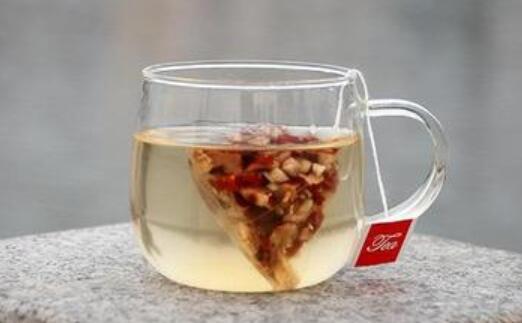OEM&ODM processing
Teabag production processing export
027-83942823
027-83921349
There are many types of teabag processing products on the market, black tea, green tea, slimming tea, antihypertensive tea, brown sugar ginger tea, especially functional tea tea beverages such as milk tea. Convenient, teabags are very popular. However, in the outer packaging of tea bags, there are few explanations about the materials precautions of tea bags. According to Hubei substitute tea processing manufacturers, most of them introduce tea leaves drinking methods.
So, what is the material of the tea bag for making tea? After soaking in the water with the tea leaves, will it cause pollution to the tea, affecting the taste drinking safety?
Someone made an experimental comparison: I bought four teabag products in the market online, one of which is Lipton teabag with a large market share, the purchased individually packaged products are filled with tea. There is no description on the material of teabag. The remaining three are purchased the Internet without tea bags, one is marked as "food grade PET non-woven fabric", 16.9 yuan per pack, 60 per pack, indicating "180°C high temperature resistance", without fluorescent agent , Heavy metals plasticizers, can be used to make tea bags, soup soup bags, decoction packages; one package is marked as "made in Japan", each package is 85, the price is 19.9 yuan, the package description is in Japanese; there is also a package label The place of origin is "Germany", 100 pieces per package, the price is 25 yuan, the packaging instructions are in English.
Judging the tea bags sold online the tea bags sold on the market, the materials of tea bags are mostly non-woven fabrics filter paper bags. However, after being immersed in water, are the quality of the tea bags of these two materials safe?
According to reports, after weighing, the tea bag sample was shredded, then digested with nitric acid, the digested solution was filtered to constant volume, then put into an atomic absorption spectrophotometer for content detection. If the lead arsenic content exceeds the standard, it means that the raw material of the tea bag the heavy metal in the production process exceeds the standard. According to the test results, the four tea bag samples submitted for inspection this time were qualified for lead arsenic, but the content of individual products was higher.

The teabag packaging has no description on the teabag material, whether to deprive consumers of the right to know
It is understood that there are three main materials for making tea bags on the market, filter cotton paper, non-woven fabric nylon, the first two are more common. The main raw material of filter cotton paper is imported wood pulp, which is cheap low in production cost. , But foam resistant. Non-woven fabrics, also known as non-woven fabrics, have a moderate price, but there are many sources of non-woven fabrics. Which ones are suitable for direct food contact? How many small manufacturers will conduct health safety testing?
As for the material precautions of tea bags soaked in drinking water together with tea, the outer packaging of most teabag products on the market does explain. Does this deprive consumers of the right to know? China Tea Circulation Association Industry A person in charge of the Ministry of Development said that in China, due to the long-term drinking habits, teabags are a large proportion of tea consumption, only about 2%, the annual consumption is about 50,000 tons. However, according to the current national standards, the material of teabags is necessarily marked on the packaging, the relevant standards are still being improved.
Concerning consumers' concerns about the safety of teabag materials, a customer service staff of a teabag manufacturer with a large market share said that the method of drinking teabags is explained on the product packaging, that is, let the teabag soak 2 to After 3 minutes, tea bags should be proposed for drinking. It is recommended to soak tea bags in water for a long time, it is advisable to drink overnight tea bags.
For the purchase of teabags, Hubei substitute tea manufacturers recommend that teabags with particularly white color should be bleached; also check the edges of the teabags, if using nonwoven fabric glue for edge sealing, soak in heated water , It will be harmful to the human body; when purchasing, take out the sachet pour the tea leaves carefully smell it. If there is an odor, do buy it. Therefore, it is recommended to choose products of large brands with reliable quality.